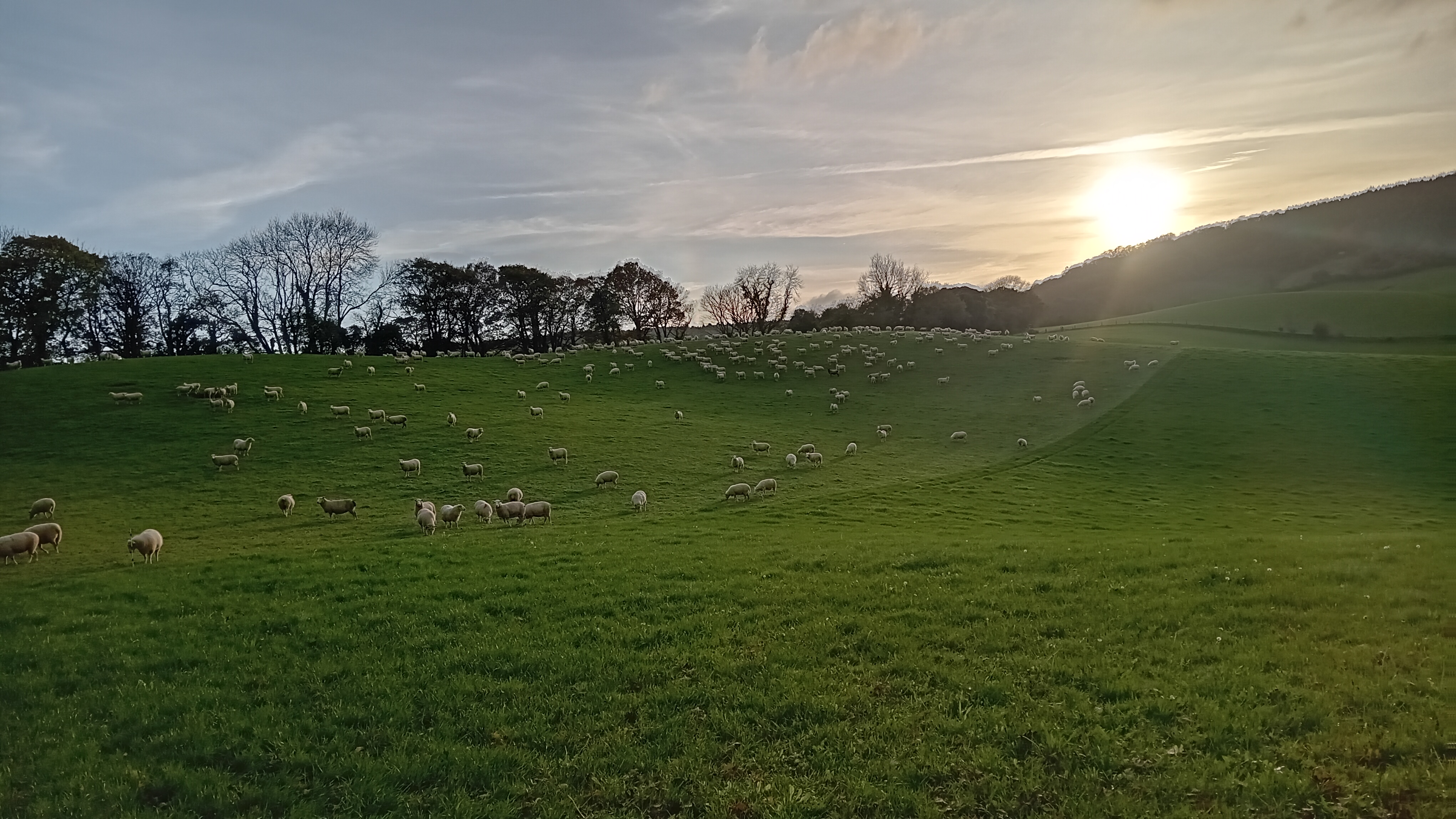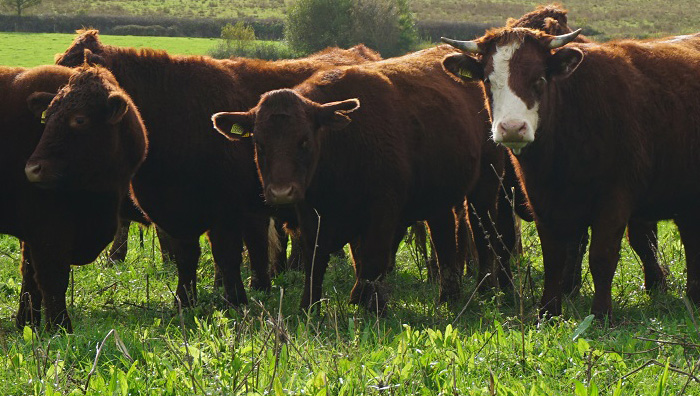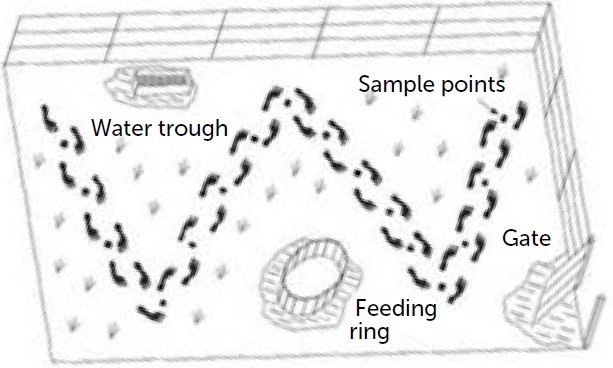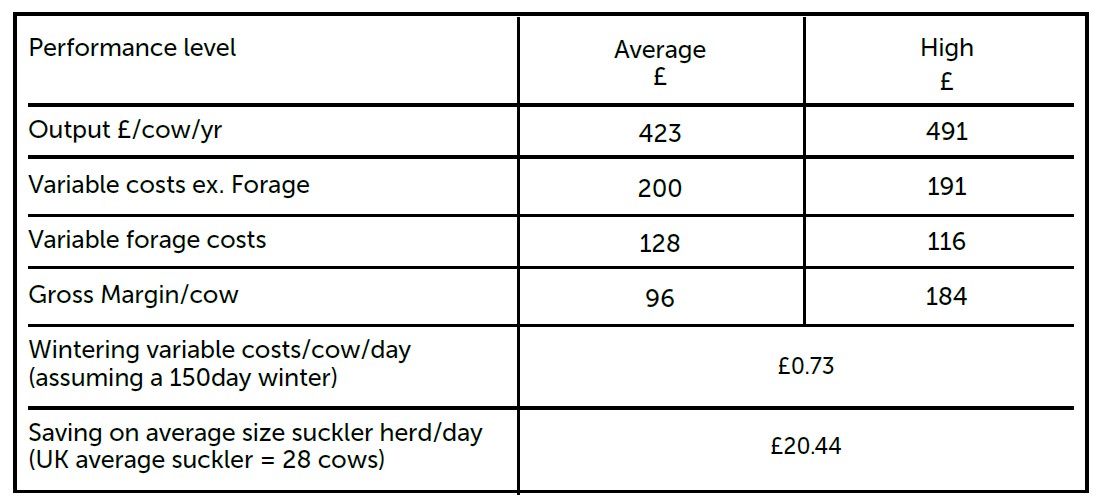- Soil Association
- Farmers & growers
- Low-input farming advice
- Improve animal welfare
- Technical guide - permanent pastures

Technical guide - permanent pastures
Download a printable PDF of this permanent pastures technical guide
Monitoring for maximising permanent pasture
Why monitor grasslands?
Maximising the quality and performance of permanent pasture (pp) without increasing inputs requires a variety of considerations. This includes soil type and quality, water infiltration, plant species present (grasses, herbs and legumes) and management practices. Effective grazing of pp is low input, resilient to fluctuating weather and can support good animal health and growth rates, providing a sustainable base to all farming activities. However, when every farm is working to different parameters it is important to remember that one size does not fit all, but there are key principles that everyone can embrace. This guide goes through the building blocks required to make the most of permanent pasture without inorganic inputs or sowing new leys. Working from the soil up, we discuss key tests and monitoring, and highlight the animal health and economic benefits possible when you start identifying and implementing the grazing management best for your livestock.
What the science says
Soil health is the foundation of productive, high-quality permanent pasture. Research from the UK Centre for Ecology and Hydrology (UKCEH) and the Agriculture and Horticulture Development Board (AHDB) highlight the strong link between soil health and grass growth. Addressing soil compaction and adopting effective grazing practices, such as rotational grazing, can enhance grass growth and pasture sustainability.
The studies also show that less intensive management (e.g. rotational grazing, longer entry and residual sward heights (min 5-7 cm)) leads to greater plant diversity. This, in turn, improves soil structure, nutrient levels, and soil invertebrate populations. These management practices are supported by certification schemes like organic and pasture for life. They demonstrate that vegetation height has a positive impact on biodiversity above and below ground, and key soil properties such as soil moisture and Nitrogen content (Norton et al. 2022).
Working out what is possible on your farm starts with monitoring. This means knowing your soils and how productive different paddocks are, to provide a baseline to get started. Research exploring the impact of using grass measuring devices and decision support tools on dairy farms found that there was a significant increase in pasture use per cow. There was also an extension of 8-10 days on the grazing season, when tools where adopted (Palma-Molina et al. 2023).


Measuring and monitoring
The following monitoring tools will help build a picture specific to your farm that can be used to determine the next steps that will have the most impact. Some of the information may already be available, or try and bring it all together in one place (in a farm map or spreadsheet), so that opportunities for comparisons and context aren’t lost.
Soils
Visual evaluation of soil structure (VESS): VESS is an easy-to-follow method for identifying where soil structure can be improved. A spade and a bit of time are all that's needed. The method moves through looking at surface indicators, the soil profile and the rooting of plants to establish a score. You need to carry out the process a few times across each field to get the full picture. Detailed resources including videos, are available on the AHDB website.
Earthworm counts
While you are checking the soil structure, it is an ideal time to count how many earthworms you see while returning the soil to the hole. Simply break up the ‘clod’ or block dug out for the VESS and record the number of worms. You can get more technical about the type of worm, if you are inclined. However, just an overall number is a great indicator as a starting point (10-15 worms per block suggests healthy soil).
Soil samples
Nutrient, pH and soil organic matter (SOM) tests are a valuable next step. However, if you haven’t looked at the soil structure, do that too. Consider where, if any, previous soil tests have been done, prioritise gaps and or problem fields as a starting point. Results indicate where some ‘quick wins’ can be made, i.e. applications of lime for particularly acidic soils, or where to focus the spreading of farmyard manure from the SOM results.
Forage
Grass measurements: Measuring the grass, often referred to as sward height, can show the quantity of forage livestock are getting or fields are producing. There are various ways to measure, however a simple sward stick is easy, and you can often get them free. Try Barenbrug, AHDB or QMS to get one.
To use, walk your field in a ‘W’ pattern, taking and recording regular measurements. You can use a lightweight clipboard to rest on the grass to give an easy measuring point. Calculate the average for the field. Most sward sticks will give you centimetre (cm), and kilogram of dry matter per hectare (kg DM/ha) values.
Indicator grassland plant species: check out our resources on herbal leys to find more information about the species that are beneficial in grazing, like clovers, plantains, and birdsfoot trefoil and what management helps them thrive. However, weeds in your permanent pasture are also indicators of wider issues. Creeping buttercup suggests waterlogging, dandelions often occur in areas of compaction, and thistles seeds take advantage in areas that have been poached or bare, hence often seen where ring feeders have been used.
Animal Health
Parasite burden: Grazing management can be used to reduce the impact of intestinal parasites on your livestock. Either through mixed grazing (cattle and sheep) or resting paddocks appropriately. Monitoring sheep and cattle with faecal egg counts (FECs) is important in all low input and organic systems for treatment decisions. However, it can also indicate which paddocks, if any, are likely to be carrying a higher burden. See the SCOPS ‘Making the most of FECs on Farm’ guide for more information on the how and why.
Growth rates: The requirements from your grazing will differ according to stock species, breed, age group and the time of year. However, if you aim to finish young stock off grass, it is important to know what you are currently achieving, so that progress, or the lack of, can be measured and adjustments made. Simple sheep weigh crates are often available second hand. Look out for grants that can be used to purchase sheep or cattle weighing and handling systems. Aim for weighing at least a couple of points across the growing season to calculate the daily live weight gain you are achieving.
Whole farm system
You will have an idea of which fields produce the best quality of forage, but do you know the key attributes of those fields that is dictating that? It is likely a combination of factors, but start by looking at the soil composition and structure. At this monitoring stage, it may be easier to start with “problem fields”. Identify what could be restricting grass growth or diversity on a field-by-field basis. However, when it comes to making management decisions, it is important to consider the whole farm system to prevent knock-on issues. For example, if you want to give longer rest periods, what is changing elsewhere? The stocking density of the sheep flock could be increased by reducing paddock size, even halving field sizes with temporary fencing will have an impact.
If you are further through the process, there are additional options to explore. This includes introducing new grasses and legumes, enhancing tree and hedge cover on farm for shade and shelter, maximising the grazing system itself.
Impact
Monitoring is just the first step. The biggest impacts will depend on what management changes are made. However, the shorter-term positive impact comes from the decision support and understanding gained though well-applied monitoring tools.
Example: VESS sampling has identified fields that are showing shallow compaction or surface capping from heavy sheep use when wet. The compaction is managed mechanically with a grass harrow to break up capping, reduce run off and improve nutrient cycling. A small quantity of additional seed is spread on any bare or thin patches. More open soil surface supports more grass growth, benefiting the grazing livestock and protecting the soil by aiding water infiltration.

Image shows W’ pattern for field sampling. This can be used for VESS, sampling and sward measurements.
Ref. The James Hutton Institute, scientific services
Costs, savings and improvements
One way to look at the potential benefits of productive pasture is to consider the length of your grazing season. Wintering cattle and sheep, through housing and feeding costs can make up a considerable element of your cost of production. Using costings from the John Nix Pocketbook 2024, you can see in the table below how much can be saved on an average suckler enterprise by extending the time livestock are outside grazing.

Table: Upland Spring calving suckler herd. Costings to gross margin, fixed costs are not included. Additional potential savings around labour and machinery relevant to wintering system should also be considered.
Knowing your costs for the winter period can help indicate the potential savings on your farm, even if you can only shorten that period by a few days. Outwintering is not possible on all farms with the ground, tenancies and environmental scheme commitments being the headline obstacles. However, significant economic gains are regularly reported when farms can move to an outwintering system, eliminating housing and some feeding costs. Check out the AHDB report on bale grazing your cattle for details on the benefits and challenges.
Another direction to approach the potential benefits is through the lens of building resilience into your grazing system. Farms across the UK are having to manage ever-increasing episodes of weather extremes. In some parts of the country, depending on the season, this may mean keeping ahead of the grass growth and preventing waste. In others, aiming to conserve additional forage to meet feeding requirements under drought or flood conditions, protecting the farm from the need to buy in feed.
Finally, productive diverse grazing can lead to savings on feed and animal health products throughout the growing season. For example, mature ewes in good body condition should not need to be wormed routinely. Even around lambing, if their condition score and protein in their diet is maintained, they can manage most worm burdens. This highlights how good grazing management can support lower inputs. Research by Innovative Farmers is also exploring the benefits grazing a diverse ley can have to growing lambs, looking at both resilience to internal parasites and growth rates.
Permanent Pastures Technical Guide pdf
DownloadCASE STUDY:
We outwinter our Aberdeen Angus cattle in mobs of around 50 to 100, giving each group 2 hectares for 2-5 days before moving on. Instead of random rest, our grazing is now well-planned, and we spend a lot of time on it. Bale grazing is introduced when grass runs low (only 260 bales for 240 cows last winter). Only weaned male calves are kept indoors. By ensuring dry lying spaces, access to rocky areas during tough winter conditions, and providing proper shelter through hedges and trees, we've seen improvements in cattle health, leading to a reduction in calving assists from 2-3% to just 0-1%, and a decrease in antibiotic use.Farm Manager, Broome Park Farms
